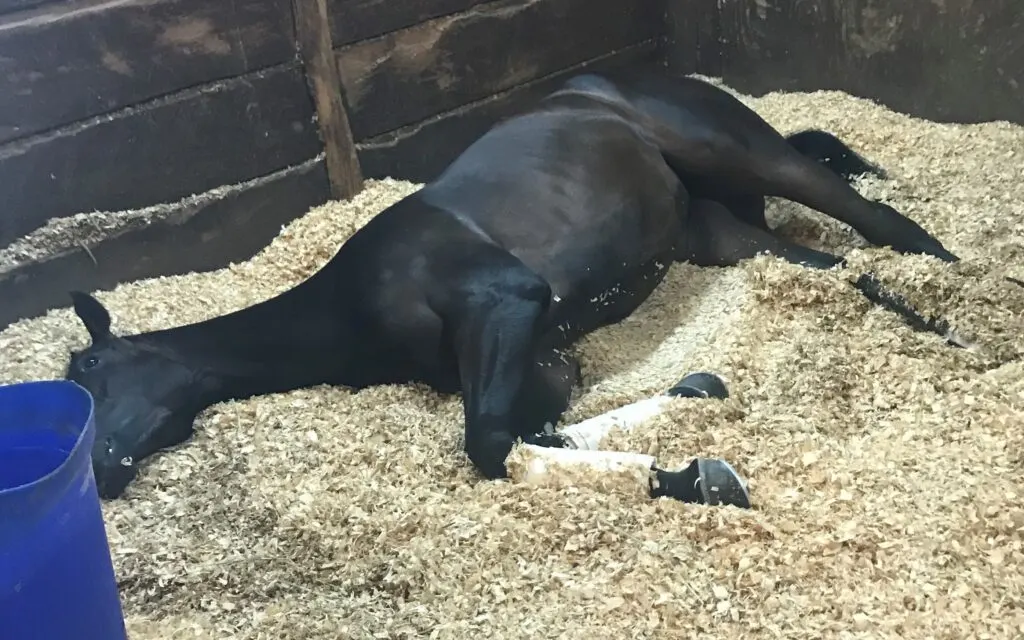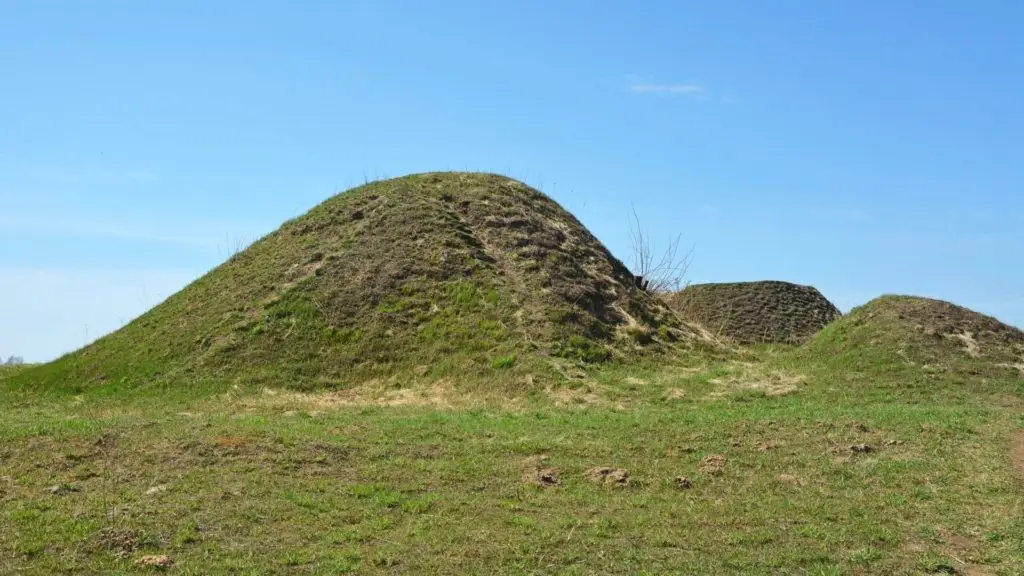Last updated: December 6, 2022
Any links on this page that lead to products on Amazon are affiliate links and I earn a commission if you make a purchase. Thanks in advance – I really appreciate it!
A horse trainer recently told me he had to euthanize one of his best horses. After he left, my granddaughter was upset and wanted to know how horses are euthanized, if it’s painful, and where they bury horses. We decided to research her questions to find out.
Horses are most commonly euthanized by administering lethal drugs or shooting the animal. Both ways are typically performed after the horse is under anesthesia and unaware of what’s happening. Local and state governments regulate where and how horses can be buried.
No one wants to lose their beloved horse, but euthanasia is sometimes necessary to prevent prolonged pain and suffering. Horse owners love their animals and want the process performed painlessly and with minimum stress.

Methods used to euthanize horses.
The euthanasia of a beloved horse is a difficult decision. When making the choice, the owner often relies on their veterinarian’s advice regarding the horse’s condition necessitating euthanasia.
The American Veterinary Medical Association (AVMA) has strict guidelines addressing the humane euthanasia of animals. These guidelines are comprehensive and include most animals and have a section specifically for equines on page 79.
For equine euthanization, the AVMA provides five distinctions: acceptable methods, acceptable with conditions, adjunctive methods, unacceptable methods, and special conditions.
Acceptable methods
Administering barbiturates or barbituric acid derivatives is the preferred method of euthanization. The drug is typically given as pentobarbital via an IV catheter in the horse’s jugular vein.
If the animal is nervous or excitable, it’s recommended a tranquilizer like acepromazine is used. But a negative side effect of giving the tranquilizer is circulation slows, and death doesn’t come as quickly.
Acceptable methods but with conditions.
The AVMA notes that “methods acceptable with conditions” are equivalent to “acceptable methods” when all criteria are met. There are two methods of acceptable euthanization with conditions; these are a penetrating captive bolt and gunshot.
A penetrating captive bolt causes death by propelling a pointed bolt into the skull of the animal. The bolt is typically launched out of the mechanism by an explosive cartridge or pressurized air.
It catastrophically damages the brain and causes immediate death when applied correctly. Only trained people should use a gun to euthanize a horse. The shot must be administered to a specific location to ensure death is as painless and quick as possible.
Click the link to the guidelines to see a diagram indicating the correct location to shoot a horse. After going to the article, you need to scroll down to page 120.
The bullet and penetrating captive bolt location is critical; I’ve heard horror stories of untrained people shooting horses, and the animal didn’t die, leading to prolonged suffering.
Once I guy told me about a horse that sustained a life-threatening injury, and someone ran and got a gun. Their intention was right; they wanted to stop the animals’ suffering.
But they didn’t understand the anatomy of horses and shot the animal multiple times before killing it. If you own a horse, check out the diagram; you never know, you could find yourself in a similar situation.

Adjunctive Methods
Adjunctive methods are those that assure death after an animal has been rendered unconscious. Some horse processing plants and landfills won’t accept animal carcasses that were euthanized with pentobarbital.
For this reason, the AVMA has provided alternatives that are not as toxic but have to be administered when the animal is unconscious. The acceptable protocol requires sedation with xylazine ketamine.
Once the horse is comatose, the animal can be injected with either potassium chloride, magnesium sulfate, or lidocaine. When given in appropriate doses, each of these will cause death, but their remains will not retain toxic poison concentrations.
Special conditions
When exigent circumstances are present, there are methods to administer death approved by the AVMA. In an emergency and for the protection of bystanders and the animal, a neuromuscular agent can be administered.
However, once the emergency is under control, the horse should be euthanized by an approved method. Remember, your safety and the safety of others are paramount.

Burying horses
My granddaughter was concerned that the trainer’s euthanized horse didn’t have a proper resting place. We decided to learn about equine burials, their history, and today’s regulations.
Humans and horses often develop a deep bond, and sometimes this relationship is displayed in burial. However, today horses have to be buried following local and state laws. Which typically is further than 100 feet from a water source and under at least three feet of dirt.
It’s a challenging decision to euthanize a horse, but disposing of the animal’s body is another hard decision you have to make. Through the years, horses have been buried in numerous and fascinating ways.
Interesting horse burial rituals throughout history.
Ritualistic horse burial sites are found across the globe. Chinese warlords, Mongols, Irish Celts, and Native Americans placed great reverence on their trusted steed’s burial.
Evidence uncovered in central China reveals ancient tombs of chariots and horse skeletons dating back to 2800 years. The skeletons were placed back to back across a vast grave.
The earliest evidence of horse burials in Europe is found in Newgrange, Ireland, and dates back 2400 years. In Newgrange, archeologists found a complex with horse skulls strategically placed in the building foundation.
Mongolian horse burial mounds trace to 1200 BCE. These mounds are typically near human remains and have a central monument. Around the central monument, individual horses were buried within a separate mound.

In some Native American cultures, a tribesman was buried with his horse to ride to the heavens together. In Russia, a similar burial plot was discovered.
Archaeologists uncovered the 2500-year-old remains of a Scythian warrior buried with his horse. The burial site also included a metal belt, a Scythian sword, and small gold foil flakes.
How to dispose of your horse after it’s euthanized.
When I was young and had a large animal die on our farm, my grandfather typically used his tractor to haul the animal deep into the woods. He told me wild animals would, and insects would quickly dispose of the flesh, and the bones would be scattered.
Once I found the location where he hauled an animal, and just as he said, the bones were picked clean and spread over the space of a football field. Today, it’s forbidden to haul dead animals to the woods, so what do we do when we lose a horse?
Burying a horse
After your horse is euthanized, it must be disposed of, but burying a horse isn’t easy unless you have large digging equipment, like a backhoe. You also need sufficient land and must abide by state and local ordinances. Before you bury your horse contact your local county officials
Processing plants will take horse remains.
Some companies process animal waste and convert it into lard, tallow, or other usable materials. Typically the bones are crushed and used as an additive for feed. This process is called rendering, and not all euthanized animals are eligible.
Below is a YouTube video that describes the choices horse owners face when their animals die.
Landfills are an excellent option for disposing of horses’ remains.
In my area, landfills don’t accept animals; however, I know they do in many places, and it is a viable and inexpensive option. Landfills typically charge by the weight for dumping and are reasonably priced. I would expect it to cost less than 100 dollars. Contact your local dump to check the details.
Where racehorses are buried
John Edward Madden was a racehorse owner, trainer, and breeder. He owned many fine horses, including the first Triple Crown winner Sir Barton. In 1908 he established a cemetery for his horses.
Included are thirteen Thoroughbreds and five Standardbred horses. Sir Barton is not buried there, but one of John Maddens five Kentucky Derby winners, Plaudit, is. The cemetery is located in the cradle of the horse racing world, Lexington, Kentucky. It’s a unique place and free to visit.
One of the most well-known racehorses, Man o’ War, is buried at the Kentucky Horse Park gates. In 1947 Seabiscuit, the grandson of Man o’ War, died of a heart attack at his home at Ridgewood Ranch in rural Mendocino County.
His owner buried him without disclosing his burial plot. Some believe he now rests under a paved church parking lot.
Secretariat, the world’s most famous racehorse, was buried intact on the farm he was raised, and Triple Crown winner Citation is buried near his sire and dam on the legendary Calumet farms.
